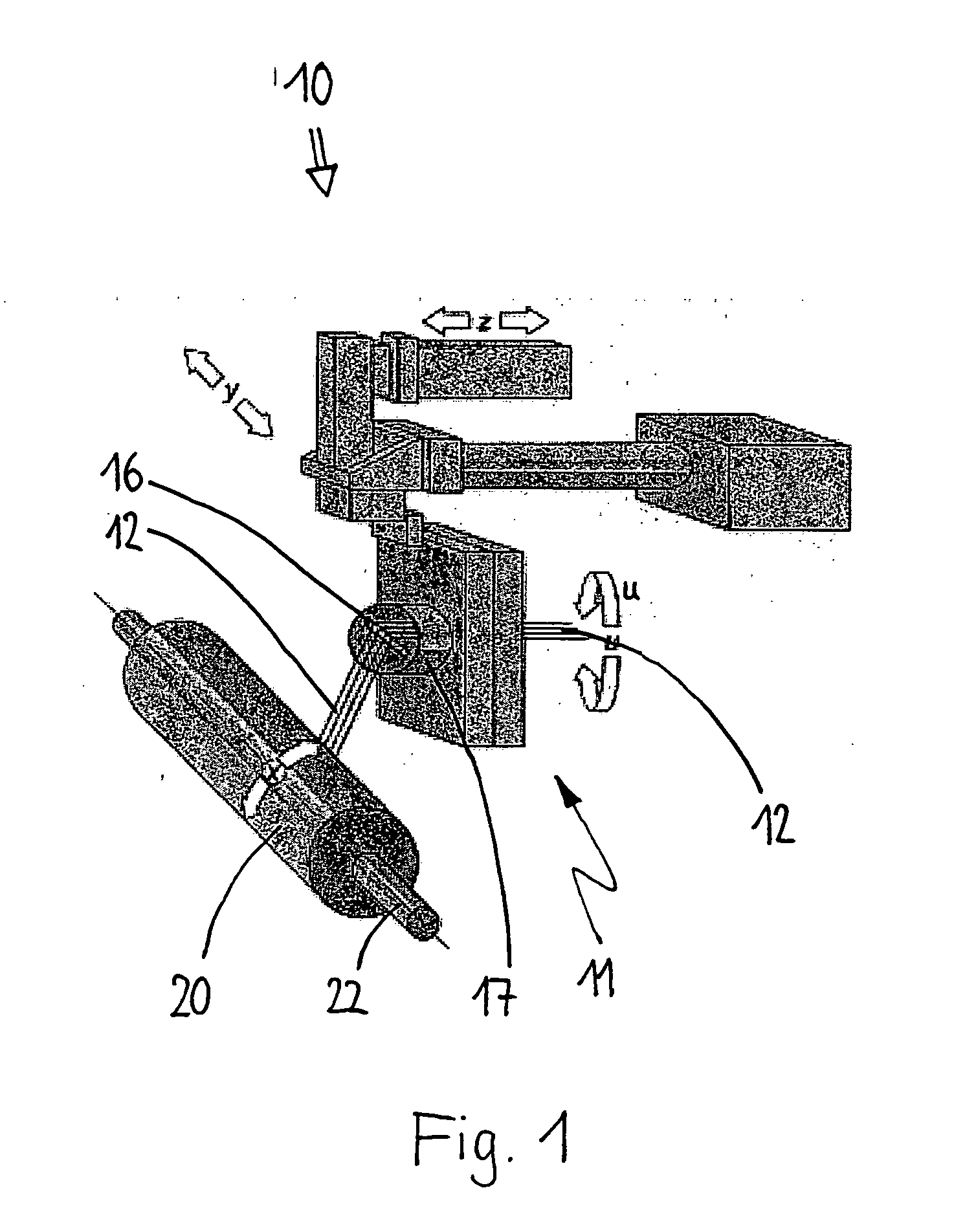System for separating and linking composite fibers
a technology of composite fibers and bundles, applied in the direction of document inserters, printing, transportation and packaging, etc., can solve the problems of premature hardening of resin, large expenditure of mechanical equipment, and inability to fully automate the production use of cutting and binding techniques, so as to prevent the wound package from slipping o
- Summary
- Abstract
- Description
- Claims
- Application Information
AI Technical Summary
Benefits of technology
Problems solved by technology
Method used
Image
Examples
Embodiment Construction
[0033] The system according to the invention is used in a filament winding installation 10 as schematically represented in FIG. 1 which may comprise a CNC-controlled single-spindle or multi-spindle lathe realized as a portal machine or a vertical machine and which may have drives to activate base elements 20 to be wound and a feeding device 11 for a fiber strand 12. The moving directions of the units and the components are illustrated by arrows. The axes of motion are referred to as x, y, z and u.
[0034] In the example described here, the base element 20 is a blow-moulded plastic cylinder 22 having curved ends and / or polar caps 24, one of them being provided with an intake or filler neck.
[0035] The fiber strand 12 may be a glass fiber tape consisting of 8 rovings with 1,200 tex each, for example. It is fed through an impregnation bath (not shown) where it is impregnated with resin, e.g. in a dipping infiltration process, and it finally reaches the base element 20 via a spool creel ...
PUM
| Property | Measurement | Unit |
|---|---|---|
| angle | aaaaa | aaaaa |
| width | aaaaa | aaaaa |
| height | aaaaa | aaaaa |
Abstract
Description
Claims
Application Information
 Login to View More
Login to View More - R&D
- Intellectual Property
- Life Sciences
- Materials
- Tech Scout
- Unparalleled Data Quality
- Higher Quality Content
- 60% Fewer Hallucinations
Browse by: Latest US Patents, China's latest patents, Technical Efficacy Thesaurus, Application Domain, Technology Topic, Popular Technical Reports.
© 2025 PatSnap. All rights reserved.Legal|Privacy policy|Modern Slavery Act Transparency Statement|Sitemap|About US| Contact US: help@patsnap.com



